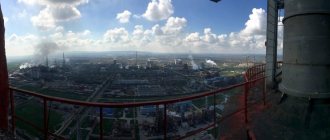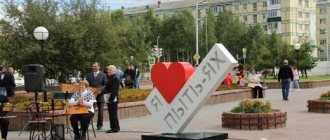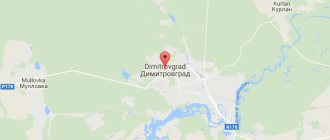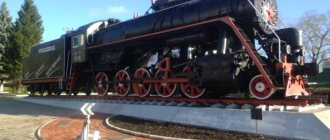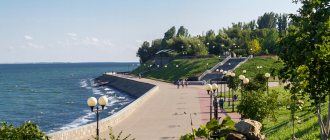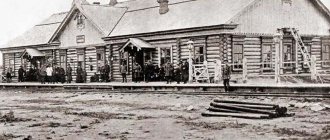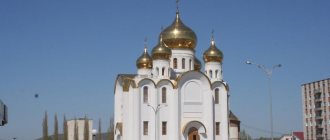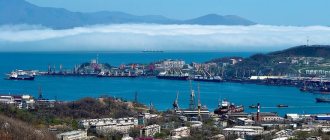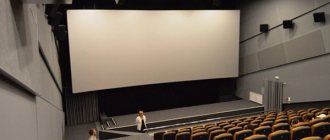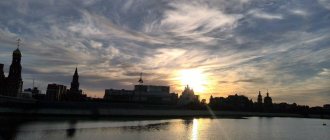Siberia is an amazing corner of Russia, which is distinguished by fresh air, endless forests and wild rivers. Everything here is original, even the people who live here are different, strong, hardy, real Siberians. Today we want to talk about the largest settlement in the Kemerovo region called Novokuznetsk. The sights of this ancient city are known throughout the country, but it will never hurt to talk about them again.
A little history
Today, about half a million people live here. The city was founded back in the 17th century. However, just recently, many neighboring cities of the Kemerovo region knew little about Novokuznetsk. Sights telling about the history of the region remained in the shadows, but today they have become interesting to a wide range of tourists.
Kuznetsk met the beginning of the last century as a relatively small settlement with its own way of life, so characteristic of the periphery. However, everything changed when the construction of a huge metallurgical plant began, and this happened in 1929. Residential settlements grew around, and soon they connected with the old city. This is how modern Novokuznetsk was formed. The sights of this unique populated center can be explored in museums and thematic exhibitions, as well as simply by walking along its streets and getting acquainted with local life.
Novokuznetsk Museum of Local Lore
The Novokuznetsk Museum of Local Lore is the first museum in the Kemerovo region, it was founded on the basis of the collection of a prominent Kuznetsk local historian Dmitry Yaroslavtsev. who began collecting his collection back in 1913, even before the revolution. The museum itself received the official title of city museum in 1927. The museum is located in the city center in a Stalinist building on Pioneer Avenue in the former building of the Kuznetsk district school. The Novokuznetsk Museum of Local Lore has an excellent collection on the history of the Kuznetsk region.
Industrial city
While studying historical reports, you will come across another name, Stalinsk. This can be perplexing, because such a city does not exist today. However, for almost 30 years (from 1930 to 1960) Novokuznetsk bore the name of the leader. The sights of this largest industrial center in Russia are very different from tourist cities, but this is understandable. The specifics of the region, its history and achievements are completely different. Nevertheless, it is beautiful in its own way and attractive to attentive and thoughtful tourists who are interested in the history of their native land.
About the garden city
The image of a “garden city” does not arise by chance in Vladimir Mayakovsky and also has a real basis. The concept of the “garden city” created a real sensation in urban planning at the beginning of the 20th century. It was proposed by Ebenezer Howard in his book Garden Cities of the Future (1898). Being a utopian socialist, the author proposed a format of cities not only with special architectural and planning, but also administrative and organizational solutions.
The city was divided into zones in the form of concentric circles, where “green belts” and administrative and cultural buildings separated the industrial zone from the residential one. This created comfortable working and leisure conditions for residents. Management in the city was carried out on socialist principles and the principles of self-government; collective property was the basis of all this.
From the first years of its existence, the Soviet government joyfully adopted the idea of a garden city, but after a little more than ten years it changed its favor to harsh condemnation. The “garden city” was replaced by another concept - a “socialist workers’ village” or “socialist city” (which was also partially implemented in our city and which “Urbanville” will definitely talk about). It is not known for certain what caused this “change of course” in Soviet urban planning. Some researchers argue that the “socialist city” coped better with the tasks of ensuring state control over the lives and production activities of people, as well as with the military and labor mobilization of the city’s population [2].
Natural beauty
This is not to say that the city is deprived of this. Siberia is rich in forests and rivers and generously endows every corner with beauty. While considering the sights of Novokuznetsk, one cannot forget about the unique natural object - the Vodopadny stream. It is about 2700 meters long. The flow speed is quite high, and a unique microclimate is created in the crevices, which promotes the growth of unique vegetation on the canyon walls. But the main thing is a working cascading waterfall. This is an amazingly picturesque place on the banks of a stream.
In summer its width reaches one and a half meters, and in winter it narrows to 0.7 m. The height of the water fall is 3.5 m, which is quite an impressive sight. The picturesque gorge is a favorite place for photo sessions. The two banks of the gorge and the waterfall are connected by the Devil's Bridge. This is a real paradise for tourists.
Sokolinskie Mountains
And we continue to look at the sights of Novokuznetsk. According to historical chronicles, these mountains were the original habitat of peregrine falcons. They occupy a huge area of 92 hectares. However, currently no nesting sites have been discovered. Sokolinye Mountains is a natural monument of local importance, which includes a number of objects. This is a section of crooked forest, which is called the “Dancing Forest”; “Ant City”, which has about 300 anthills on an area of 1 hectare. Also among the local attractions is Lake Predgornoye, which has greatly decreased in size, but still remains beautiful.
Poplars – sedge forest
It covers an area of more than 70 hectares. The amazing sedge forest is a standard of natural floodplain vegetation. This grove is called relict, because three species grow here, dating back to the pre-glacial period. This is clearly not enough to assign it such a class, but the grove is certainly unique. Black poplar is found almost everywhere in Siberia, but nowhere else in such quantity as here.
The attractions of Novokuznetsk do not end there. Photos will allow you to appreciate their beauty, but will not convey all their natural charm.
Its seven wonders of the world
And we are slowly returning back to the city, because it is no less interesting than its surroundings. And the first thing we recommend tourists see is the ancient Kuznetsk fortress, or rather its remains. This is an outstanding example of military engineering, which is the only one of its kind in the Urals and beyond. In fact, it is an architectural symbol of the city. The total area is about 2.5 hectares.
The fortress in its modern form was founded in 1800; before that, its function was performed by earthen fortifications. It became a very expensive building. The fortress is an irregular polygon, the long sides of which are oriented to the south and north. At the corners there were semi-bastions on which the artillery was located. A system of loopholes, defensive walls and ramparts was thought out. The fortress covered the city with its cannons. If you decide to explore Novokuznetsk, you need to start exploring the sights of the city from here, from the very beginning.
Kuznetsk Fortress
By rights, the main attraction of the southern capital of Kuzbass, Novokuznetsk, is the Kuznetsk Fortress. The Kuznetsk fortress was built in 1820 on Mount Voznesenskaya, which towers above the city and offers a wonderful view of Novokuznetsk and the surrounding area. The Kuznetsk Fortress is a true example of the fortification art of the Russian Empire of the late second half of the 18th - early 19th centuries. In 1991, a museum was founded on the territory of the fortress, which includes such architectural objects as the Soldiers' Barracks, the Powder Magazine, the Chief Officer's House, the Headquarters Officer's House, and the Barnaul Passage Tower. as well as a wooden chamber for storing fire extinguishing machines.
Transfiguration Cathedral
This is another historical and architectural pearl that every tourist should get to know. At the same time, it is also the largest monument of religious fine art in Kuzbass. Without it, it is impossible to view the sights of Novokuznetsk. Photos and descriptions will not fully convey the splendor of the structure, but will only allow you to have a general idea. The Transfiguration Church of the first generation was born in 1621, but in the 18th century it completely burned down and began to be rebuilt anew. In 1835 it was rebuilt, but at the beginning of the 20th century it was again destroyed by fire. Already in 1992, restoration work resumed, during which the Phoenix bird rose from the ashes.
Wood carvings were made on the iconostasis of the temple aisles, all the icons were restored and located in their places, that is, the temple was restored to its former greatness. In 1997, the main dome of the church was covered with copper, and two years later with gilding. Only in the fall of 2004 were restoration work completed, and the beautiful temple with a 400-year history celebrated a new birthday.
Museum of F. M. Dostoevsky
The sights of Novokuznetsk are difficult to describe in a nutshell. For an inquisitive tourist, it will be interesting to visit the house in which the famous Russian writer lived and worked. It is located in the historical part of the city, on Dostoevsky Street. Today they try to preserve the spirit of a bygone era so that visitors can immerse themselves as much as possible in the life of the 19th century. The monument represents a traditional house built at that time. Rectangular, log, with a hipped roof. The plot is fenced with a wooden fence with two gates. This is a museum where they try to keep everything the same as during the writer’s life.
Famous monuments of Novokuznetsk
Hello, Ksenia!
Novokuznetsk is a fairly large and oldest city in the Kemerovo region. The city has a rich history. Novokuznetsk was founded at the beginning of the 17th century, and at the moment more than half a million people live in it. This is a fairly large city with many very interesting monuments. So, let's look at the most significant ones!
Bust of Yu.A. Gagarin
The monument to Yuri Gagarin was erected in 1981 in the park of the same name, next to the planetarium. The creators of the bust were the sculptor V.I. Dudnik and the architect Yu.M. Zhuravkov. The monument depicts the legendary cosmonaut in a spacesuit and with a constant smile on his face.
Monument to the fallen Novokuznetsk residents
The monument to “Novokuznech residents who died in local wars and military conflicts” is also located near the University, not far from the bust of E.I. Drozdetsky. It was installed recently, in 2007, and is a tall stele framed at the top by a bell and a cross.
Stele “50 years of Novokuznetsk”
When you get off at the Kommunar Cinema stop and visit the Gagarin Park, you will immediately see a tall stele, which was opened in 1981. This monument, made of concrete, granite and steel, is a huge panel on which the names of the leading labor collectives of the city are carved.
Monument "Komsomol Glory"
This monument is a stainless steel stele unveiled in 1981. On this rather tall structure you can see the city's coat of arms and flag. The Komsomolskaya Glory stele is located in the park on Kirov Street.
Monument to Lenin and Gorky
In front of the building of Kemerovo State University on Metallurgov Avenue stands a unique monument of its kind. On it we see Maxim Gorky talking with Lenin. Not far from this monument is Gagarin Park.
Bust of E.I. Drozdetsky
In the park near Univerbyt, at the intersection of Kirov Street and Bardina Avenue, since 1986 there has been a bust of the Hero of Socialist Labor Yegor Ivanovich Drozdetsky, who at one time worked as a foreman at the Novokuznetsk longwall face of the Nagornaya mine.
Bust of Academician I.P. Bardin
On Metallurgov Avenue you can come across another interesting monument - a bust of Ivan Pavlovich Bardin. It was opened in 1967 thanks to the efforts of the Soviet sculptor E.D. Shaposhnikov. I.P. Bardin is an academician and metallurgist who has earned many awards in his time.
Monument "Friendship of the Peoples of the USSR"
This monument is perhaps the most famous in Novokuznetsk. It consists of a stele located in the center of the ensemble and petals surrounding it. Each of them depicts the coat of arms of the former union republics of the USSR. In the center we can see a stele with the coat of arms of the Soviet Union on top.
Monument to A.V. Suvorov
At the intersection of Kurako Avenue and Suvorov Street in 1953, a monument to Alexander Vasilyevich Suvorov was erected. Sculptors A.N. Voronikhin and B.N. Orlovsky did a lot to ensure that their brainchild fit organically into the surrounding landscape. It is also interesting that this monument was originally made of plaster, and only relatively recently was replaced by a cast iron analogue.
Monument to Sergei Mironovich Kirov
The monument to S.M. Kirov was erected in 1958 at the intersection of Kirov Street and 25 Let Oktyabrya Street. The sculptor was N.V. Tomsky. Kirov was a prominent party figure during the Soviet era.
Monument to V.V. Mayakovsky
A large sculpture of V.V. Mayakovsky is located at the intersection of Metallurgov Avenue and Ordzhonikidze Street. Novokuznetsk residents decided to pay tribute to the great poet, who at one time dedicated one of his best poems to their city.
I hope my answer was helpful to you!
Best regards, Valery.
Monument to Industrial Development
As we have already said, this city is the largest metallurgical center of the country, which means that the corresponding attractions of the city of Novokuznetsk should also be considered. The photo of the plant is not very bright, but it is a magnificent cultural heritage site.
This is the first administrative building in the city; moreover, it was the first experience of local builders in the construction of stone structures. This is a three-story brick structure, symmetrical in composition. During the reconstruction, the facades received plastic treatment with flat blades and black panels. They are painted gray. The building is very interesting, from the point of view of professional architects, but even the average person may be curious to know more about it.
About creation
It’s not for nothing that the ode to Novokuznetsk is called “The Story,” and the information in the epigraph is marked “from the conversation.” Mayakovsky actually learned about the grandiose construction of the Kuznetsk Metallurgical Plant from a conversation with Comrade Khrenov.
And Mayakovsky’s Khrenov is not just a sonorous strong Russian surname, but a real character. Not all characters are fictional, and any coincidences are not accidental. In the words of Dmitry Bykov, there are few poets whose biographies would be as “trampled” as the biography of Mayakovsky. In this regard, the personality of Comrade Khrenov has been studied to the smallest detail.
Iulian (also Yan, Ulyan) Petrovich Khrenov was, according to contemporaries, strong-willed, proactive, active and inquisitive. In general, “a real Bolshevik.” At various times he held the positions of deputy director of the Kramatorsk Metallurgical Plant and assistant to the Prosecutor General of the USSR. As a member of the metalworkers' union, Khrenov visited the KMK construction site in 1929. And, as usual, he was completely amazed by it. He told Mayakovsky about this during a personal meeting in Moscow - in detail, infectiously, and enthusiastically. The poet “recorded” this story and its author into history, publishing it in the magazine “Chudak” and later in “Komsomolskaya Pravda”.
But the fates of many progressives and Stakhanovites of Stalin’s time could change dramatically in a matter of seconds. And instead of labor orders and honors, turn to hard labor in a camp. Yan Khrenov did not escape this fate either. He was repressed as a Trotskyist and sent “on a long voyage” to the mines of the Far East.
According to the writer Varlam Shalamov, the poem became a real calling card for Khrenov, which was “accepted” in any society:
“The hold of the steamer “Kulu” in Vladivostok. Seryozha Klivansky, Vavilov, me - closer to the light, closer to the stairs. A middle-aged, prison-like pale man with a greenish-yellow face settles in with us. He holds a book in his hand - the only one in the hold. And besides, it’s like a “red-skinned passport” - a red cardboard one-volume edition of Mayakovsky.
- We are such and such.
- And I am Khrenov. Remember from Mayakovsky,” the red-skinned one-volume book is leafing through, “Khrenov’s Story about Kuznetskstroy.”
- “Will there be a garden city here?” - Vavilov laughs.
- Exactly.
“A red-skinned passport won’t save you here,” Klivansky explains.
Khrenov is afraid - he is a heavy heart. But here’s the paradox: Khrenov was saved by the disease. He managed to finish his term, work as a civilian as a mine manager, but did not have time to return to the “mainland”. He was assigned “for life” and died, it seems, shortly after the war” [1].
Boulevard of Heroes
And we continue to look at the sights of Novokuznetsk. Photos with names and descriptions will allow you to imagine this city in all details, even if you have never been there. This is a historical monument of regional significance. It was opened on May 9, 1975.
The Boulevard of Heroes is a grandiose structure that amazes with its size and grandeur. The monument combines originality of solutions, innovative use of techniques and materials. This is a monument to the heroes of the Great Patriotic War, and it has its own, rather complicated fate. The city was deep in the rear and did not experience the hardships of the war, so initially even the creation of a Walk of Fame was not planned here. However, thousands of townspeople did not return home from the war fields. And the feat of labor is completely immortal; Novokuznetsk provided an inexhaustible flow of metal for fighting. Therefore, several decades after the end of the war, the city administration decided to erect a monument.
Architectural appearance
Enough has already been said about what is outstanding about this city for tourists. All that remains is to consider the residential area itself and note the existing attractions of Novokuznetsk. The central area includes the city administration building. This is a unique structure that has the shape of a trefoil. Everything is designed so that you can enter from any point in the adjacent square and streets. Inside the building, a gentle spiral ramp instead of stairs runs through all six floors. It is the only one in Kuzbass.
Distillery
Unfortunately, Novokuznetsk, whose sights were mostly destroyed during the Soviet period, cannot boast of examples of ancient architecture that have survived to this day. Among the few civil buildings that are more than a century old is the distillery building. This is the first food industry enterprise, which was put into operation in 1898. Despite its venerable age, it continues to operate today. Moreover, the products of the Novokuznetsk distillery have more than once won various prestigious awards at various competitions, which only confirms its high quality.
Palace of Culture
If you have a free evening ahead and want to explore the city and enrich your own knowledge, then you can visit this monument of architecture and urban planning. The huge Palace of Culture with an area of 70 thousand square kilometers was built specifically for this city, according to a unique project. Today it has a huge theater hall, where a variety of performances are regularly held. Here everyone can find an option for a pleasant evening. This is a three-story building with fifty windows along the main facade and six sculptures on the pediment.
House of merchant Fonarev
Do you want to know what Novokuznetsk looked like 150 years ago? Unfortunately, almost no sights have been preserved that would allow one to form an opinion about this period in the history of the settlement. Only on the street You can see several ancient buildings in Vopadnaya. For example, Fonarev's House. It turns out that in the mid-19th century, Nicholas the First approved the layout of the city and allocated space for the construction of two-story merchant mansions. One of the famous merchants in Kuznetsk in those days was A. Fonarev. He purchased one of the plots of land and erected a solid mansion on it, which still stands today.
Drama Theater
Do you want to go to Ancient Rome or Greece? Then welcome to the largest and most beautiful theater. It is a quadrangular building with a stage box, which is adjacent to the entrance part with a vestibule and a main staircase. It is surrounded on three sides by a deep portico, as well as 20 smooth-bore columns with capitals. In 2010, the theater building opened after a major renovation. From now on, the foyer and auditorium are decorated with granite and marble. So, if you are passing through this city or on business, do not forget to go to the theater.
